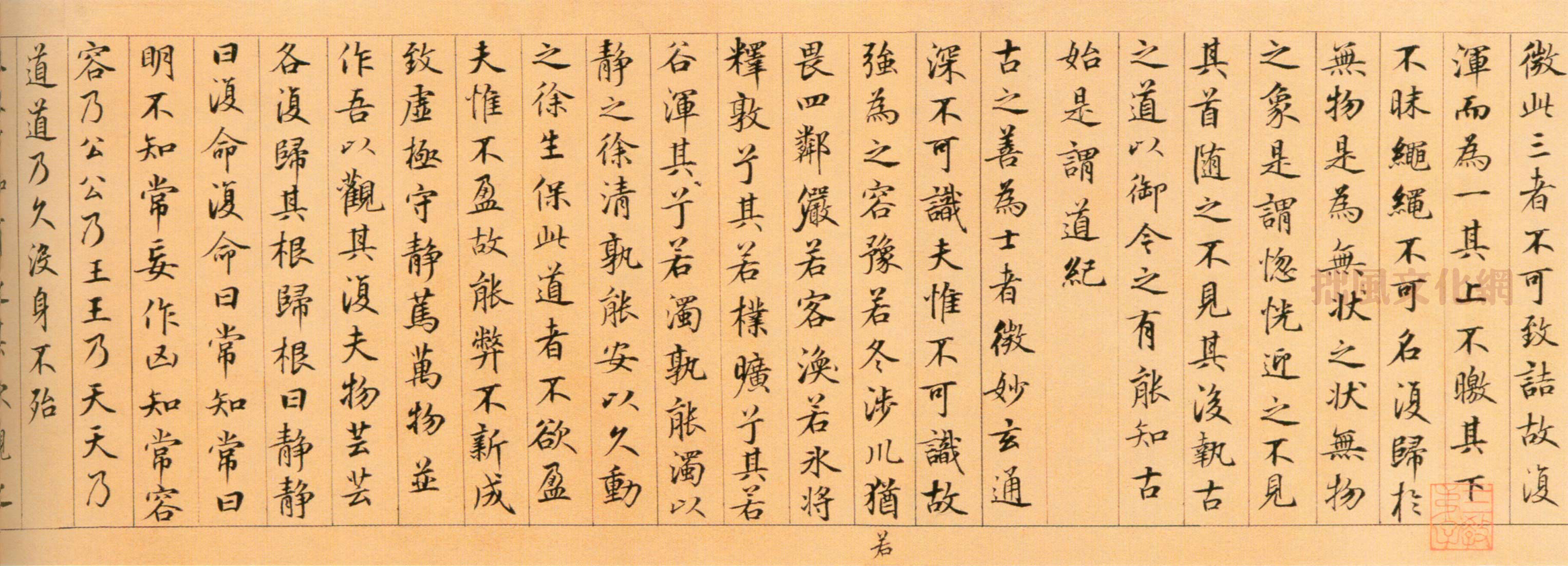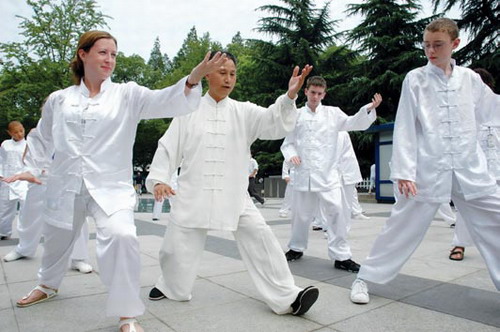Taoism
Origins
-
Taoism can be traced back to ancient time when people admired nature and spirits, existing divination forms such as communicating with god. The very beginning mode of the religion turned out to be sacrifice to god and ancestors in Shang and Zhou Dynasty.
-
In Spring and Autumn Period, ancient religion had experienced striking and reasonable change, which is also the differentiation from the socialized culture. Zhu Zi Bai Jia, especially Taoism, Confucian and Mohist as revolutionary theories, together with Yin-Yang Learners, all contributed to the origins of Taoism.
-
Not until Eastern Han Dynasty, the need of the religions became so urgent that society was facing collapse of the Han dynasty and in mass of wars, the original Confucianism transformed into religious and at the moment Buddhism was introduced to everyone.
-
Back-ground like this,the developer of Taoism—Zhang Daoling synthesized traditional spirits admiring, immortal thoughts and Yin-Yang magic with Huang Lao Dao Jia step by step. By this time, the Taoism was fundamentally established.
History
Founding time:
- 264-405 AD: Two things marked the foundation of the Taoism, one is the spread of the “Tai Ping Jing”; another one is the development of Tian Shi Dao. Along with the popularity of alchemy and the deepening of related theories, Taoism was on a rapid speed of growing track.
Prosperous time:
- 618-1279 AD: The Taoism was much revered in this period and became the national religion. It was popular internally and also externally and through immigration and cultural exchanges, it was introduced to other Asian countries.
Developing time:
- 1271-1644 AD: Northern China emerged Quan Zhen Dao set up by Wang Chongyang and was supported by Wu Dang Sect. Later in dynasty Ming, the then emperor strongly supported the Wu Dang Sect. At that time, Taoism was still in dominant position of Chinese religious culture.
Decline period:
- 1636-1911 AD: Dominators believed in Sa Man and Zang Chuan as religions and suppressed the Taoism which was believed by most Han nationality when the Taoism went to the road of desperate.
Ever since the People's Republic of China was founded, series of new policies were implemented. Rules and principles of the Taoism were banned which were in conflict with contemporary regulations. In 1957, main land of China set up China Taoism Association arranging inner business of the related issues. It is not until the Great Cultural Revolution vanished did the Taoism recovered from the havoc.
Numbers of people believing in Taoism is countless as not all of them are required to be monks. Based on the data, Taoism is deemed the largest religion in Tai Wan, China.
Theory
On the basis of Dao(Tao) De Jing by Lao Zi, Tao and De are prized as basic faith. Tao literally means "way", but in Taoism, it is "the One, which is natural, spontaneous, eternal and indescribable. Tao is the nature of all universal substances and exists everywhere. All things are unified and connected in the Tao. Te(De) embodies Tao.

Some of the theory Taoism connects with traditional Chinese medicine(TCM)theory well cause it respects birth and life and detests death so the believers are devoting their whole life pursuing the channel to immortality. They believe that length and fortune of life can be controlled by human himself not the god. Being good at cultivating himself in a religious way and preserving one’s health well, they deem he would reach the immortality and turns into an immortal. Therefore, Taoism has so many practice methods citing as smelting the Dan medicine; massage and chanting, etc. Taking Dan is considered one method to reach immortal.
As the famous saying goes, when nothing is done, nothing is left undone. This is another way of following Tao. Things in this world act or develop in their own patterns; we human should not act upon it.
Tao Skills
Various skills of Taoism among which five most influential ones are listed as follow:
- Shan(means mountain in Chinese), which through sitting in meditation, practicing Kong Fu and food therapy to fulfill the satisfactory human character.
- Yi(means medical science)has various ways of treating:
- Fang Ji— creating powder and pills from old medicine to cure disease;
- Zhen Jiu-(Acupuncture and moxibustion therapy)- using circulation theory of collaterals, blood and Qi in human body to stimulate the pained area to cure;
- Ling Zhi—taking well advantages of human spirit and emotion to achieve the therapy effect and turned out to be the modern name called psychotherapy.
- Ming(means life)is to understand life through fate inference in order to follow the nature rules better and live a better life.
- Xiang-one method of chasing propitious luck and avoid ill one on the basis of what we see.
- Bu—divination aimed at forecasting and manage things orderly.
Influences
Taoism impacts on all facets of Chinese culture on different levels.
Some of the sects practice Wu Shu and Qi Gong.

Martial arts in Taoism is quite distinct among all kinds of Wu Shu, it follows the model of round and circle, gently stretch out the arms and legs and let one's opponent start hitting and then get the better of him.Tai Ji, one simple Wu Shu, is practiced by larger and larger amount of people now days in China that no matter you are young or aged; it is definitely a nice way to keep healthy.
Qi Gong in Taoism is another branch of Chinese Qi Gong, it also made contribution to the exploration and development of Qi Gong.

Ways to keep healthy in Taoism also inherited and promoted meridians content of Huang Di Nei Jing in traditional Chinese medicine (TCM). In addition, Taoism followers learn the medical skills and contributed to TCM on grand extent, believers as Ge Hong, Sun Si Miao and Tao Hong Jing, all forged their careers in this domain.
Influences on TCM
Philosophy thoughts of Taoism attaches with life science and medical science so well and the double identities of the Taoists also as medical scientists that the medicine and the Taoism tightly bounded with each other.
The view of unity of heaven and human being separates the traditional medicine study from western medicine. Tao pursues long life and respect all kinds of healthy-keeping methods. Tao theory of healthy-remaining includes Tu Na, Dao Yin and massage, all absorbed by Chinese health preserving theory.
Many of the Tao theories become central part of the Chinese medicine despite its philosophy section among which, acupuncture assimilates its essence.